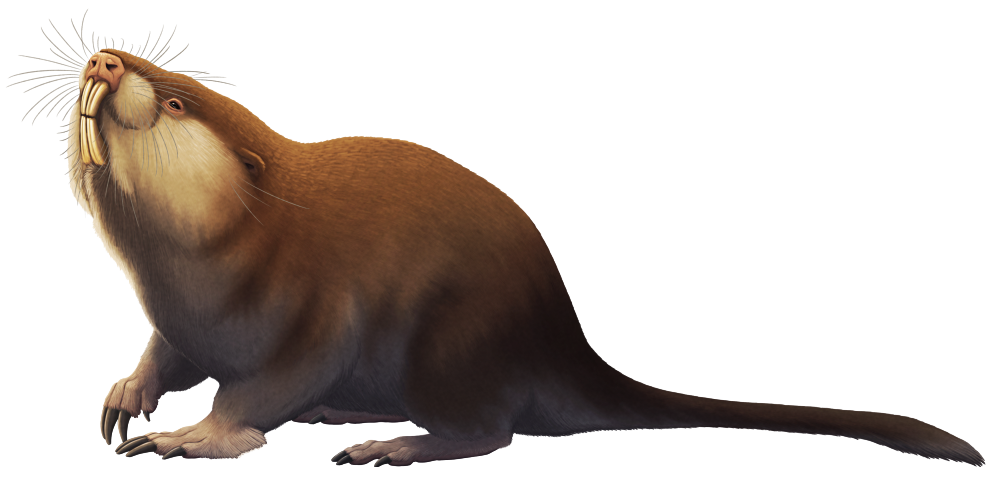Blesmols, or African mole-rats, are a group of rodents adapted for mole-like burrowing. Closely related to the more famous naked mole-rat, these little mammals have reduced eyes and ears along with incisors that protrude out even when their mouths are closed, allowing them to excavate tunnels primarily using their teeth.
One of the earliest known fossil blesmols is Bathyergoides neotertiarius here, from the early Miocene of Namibia about 20 million years ago. For almost a century this species was known only from teeth and partial skull remains, but recently a partial skeleton was described giving us a better idea of its overall appearance and lifestyle.
Bathyergoides was a fairly large blesmol, around 25cm long (~10″), and was already specialized for tooth-digging with a skull very similar to modern forms. It had powerful muscular forelimbs that would have been used to push back loose soil while burrowing, but unlike its living relatives it also had a long tail and relatively slender hindlimb bones – with anatomy suggesting its legs were used more for stabilizing its posture than for actively digging.
It may have had a less subterranean lifestyle than modern blesmols, digging out extensive burrows but still foraging for food above ground in a similar manner to modern semi-fossorial rodents like giant pouched rats.

